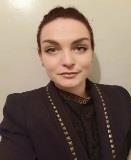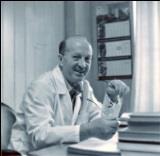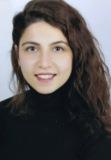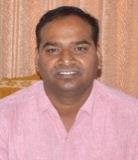Day 1 :
Keynote Forum
Inna Mincheva Ivanova
Medical University of Sofia, Bulgaria
Keynote: Impact of physical activity on berg balance test scores in male patients with multiple sclerosis
Time : 09:30-10:00

Biography:
Inna mincheva ivanova has completed her graduation and her phd in 2016 at national sports academy “vasil levski”. She has been working as an assistant Professor at the medical university of Sofia since 2016. She is simultaneously teaching at the Sofia university. She has several publications in national and International journals.
Abstract:
Keynote Forum
Bitsoev Vladimit Dodtievich
Medical and Technical Sciences Academy, Russia
Keynote: Modern view on the mechanism of
Time : 10:00-10:30

Biography:
Vladimir dodtiyevitch bitsoyev(1943), Ph.D., medicine, academician of the academy of medical and technical sciences, colonel of medical service in retirement, doctor of the highest category. He graduated from the military medical faculty at the gorky state medical institute by specialty "medical treatment" in 1971. He has 75 scientific publications in national and foreign journals, 1 monograph on "restorative medicine", methodological recommendations for physicians in restorative medicine, 4 patents (3 Russian patens and 1 German patent. V.d. Bitsoyev proved the "world novelty" of water and blood plasma activating under the influence of underwater light therapy through the fiber optic cable. V.d. Bitsoyev revealed first previously unknown new mechanisms of the effect of weak electromagnetic waves on the holistic organism as a "tunnel effect", as well as ways of their registration at the atomic and molecular levels.
Abstract:
Keynote Forum
Esra Kinaci
Duzce University, Turkey
Keynote: The effects of kinesio taping applied cervical muscle on pain, disability and quality of life in patients with episodic migraine
Time : 10:45-11:15

Biography:
Esra kinaci has completed her undergraduated degree at istanbul medipol university and postgraduate studies at istanbul medipol university, department of Physiotherapy and rehabilitation. She has worked as a physiotherapist at pediatric rehabilitation center in istanbul between september 2016-april 2017. She’s Been a research assistant at duzce university, department of physiotherapy and rehabilitation since 2017. Her research interests include pediatric neurology, Neurologic rehabilitaton, orthopedic rehabilitation, women’s health.
Abstract:
Keynote Forum
Shailendra Kumar Mehta
Janardan Rai Nagar Rajasthan Vidyapeeth, India
Keynote: Efficient method of computer position on unswerving eye contact of patient with physiotherapist
Time : 11:15-11:45

Biography:
Shailendra Kumar Mehta is working as a Principal in the Department of Physiotherapy at JRN Rajasthan Vidyapeeth, Udaipur, India. He has founded SHECR And Social Welfare Foundation and trained broad horizon of lymphedema management to 1000 physiotherapists and students. He has presented 32 research Papers and published 30 articles. He has authored a book entitled “Management of Lymphedema” and developed a new technique for the management of Lymphedema. He has been awarded with 15 prestigious awards. He is Editor In Chief of International Journal of Physiotherapy and Cancer Rehabilitation. His Areas of specialization are Cancer Rehabilitation, Lymphedema Management, etc.
Abstract:
- Physiotherapy
Chair
Inna Mincheva Ivanova,
Medical University of Sofia, Bulgaria
Co-Chair
Shiv Singh Sarangdevot
Janardhan Rai Nagar Rajasthan Vidyapeeth, India
Session Introduction
Brian Wadsworth
NYU Langone Health, USA
Title: Strategies to achieve high intensity gait training in a clinical setting: A Case Study
Biography:
Abstract:
Sabrina Degaspari
Centro Universitario Lusiada, Brazil
Title: Early mobilization of burned patient-A case report
Biography:
Abstract:
Marcus Orgel
Medical School Hannover, Germany
Title: Osseointegrated, percutaneously guided implants for rehabilitation after leg amputation-via the endo-exo-prostheses in hannover
Biography:
Abstract:
Khin Maung Bo
Rehab Medicine Service, Barnard Court Health Centre, UK
Title: Gait analyisis by video grabbed frame sketching, alternative to gait lab analysis
Biography:
Abstract:
Khin Maung Bo
Rehab Medicine Service, Barnard Court Health Centre, UK
Title: Functional neurology cases
Biography:
Abstract:
Henri Henell
Physiotherapist Henri Henell, Norway
Title: Joint mobility-the key to longer and better life
Time : 14:00-14:15
Biography:
Abstract:
David IP
Wellness Pain Centre, Hong Kong SAR China
Title: Use of LLLT (Low Level Laser Therapy) in managing pain after fracture by healing the fracture
Biography:
Abstract:
Gi-Young Park
Daegu Catholic University School of Medicine, South Korea
Title: Sonoelastography for skeletal muscle muslces
Biography:
Gi-Young Park graduated and got degree of MD, phd from Yonsei University College of Medicine (Seoul, Korea). He has been a head professor of Department of Rehabilitation Medicine in Daegu Catholic University Hospital since 2008. He ublished more than 100 papers in reputed journals and elected as the next president of Korean Academy of Neuromusculoskeletal Sonography. He have been teaching rehabilitation medicine and neuromusculoskeletal ultrasound since 1995 and has given many lectures and hands on instructions at courses organized by universities, academies, and societies in Korea, Taiwan, China, Japan, India, and Myanmar etc.
Abstract:
Gi-Young Park
Daegu Catholic University School of Medicine, South Korea
Title: Imaging diagnosis and intensive rehabilitation treatment of frozen shoulder
Biography:
Abstract:
Samah Alharbi
King Faisal Specialist Hospital and Research Centre, Saudi Arabia
Title: Case study: Physical therapy protocol for the management of obstetric brachial plexus palsy
Biography:
Abstract:
Najwa Alfarra
King Faisal Specialist Hospital and Research Centre, Saudi Arabia
Title: Impact of action II petite lady laser machine in the treatment of urinary incontinence and sexual dysfunction female
Biography:
Najwa Alfarra is from King Faisal Specialist Hospital and Research Centre, Saudi Arabia.
Abstract:
Fatimah Ahmad Alzaher
King Fahad Military Medical Complex, Saudi Arabia
Title: The effect of physiotherapy program on hip pain and postural control in adolescents with sickle cell disease
Biography:
Abstract:
Ertan Tufekcioglu
King Fahd University of Petroleum and Minerals, Saudi Arabia
Title: A novel method watsu can be incorporated into hydrotherapy programs for increasing range of motion
Biography:
Abstract:
Ann Tamm
Tartu University Hospital, Estonia
Title: Early diagnosis of knee osteoarthritis to enable non-pharmacological treatment
Biography:
Ann Tamm is from Tartu University Hospital, Estonia.
